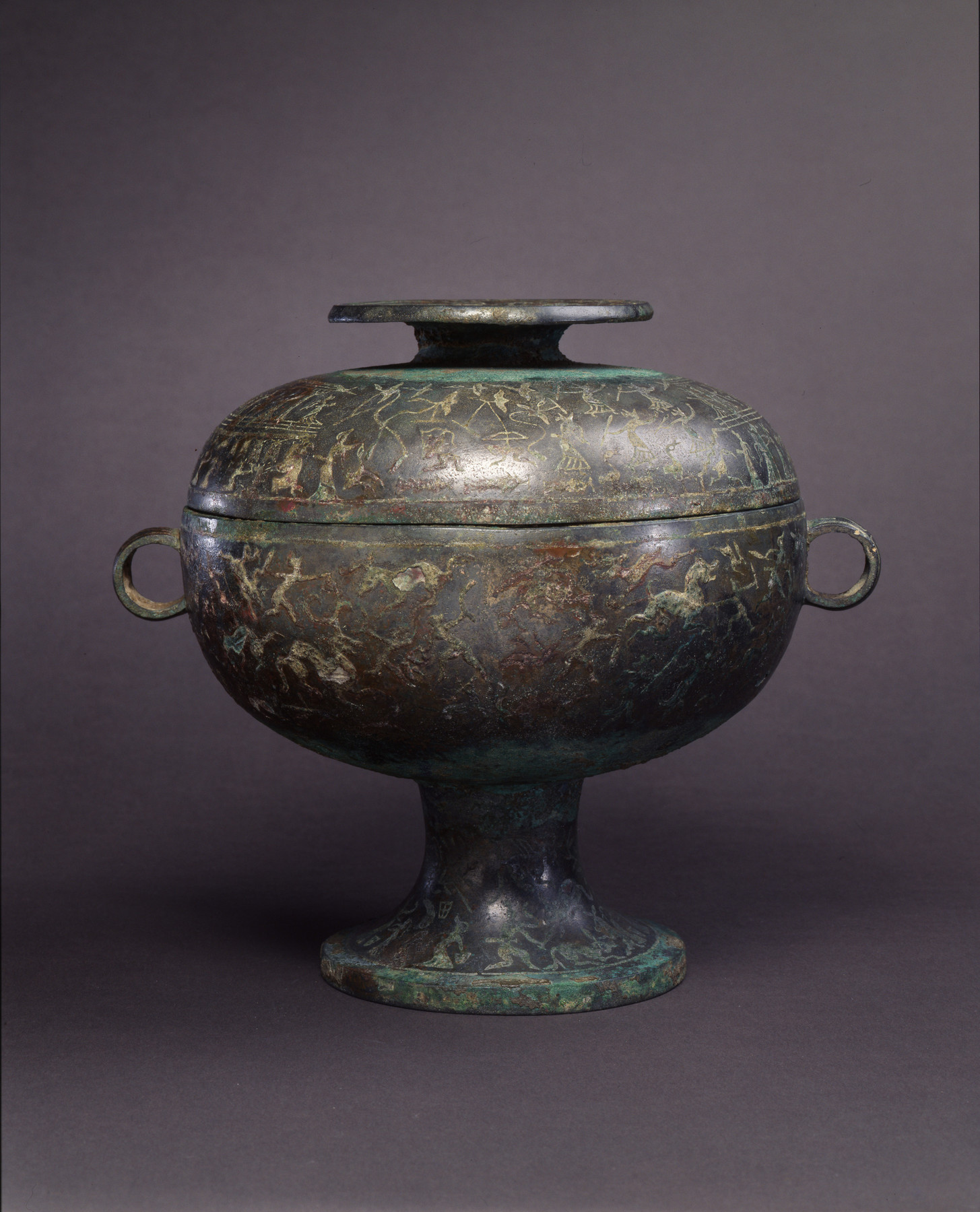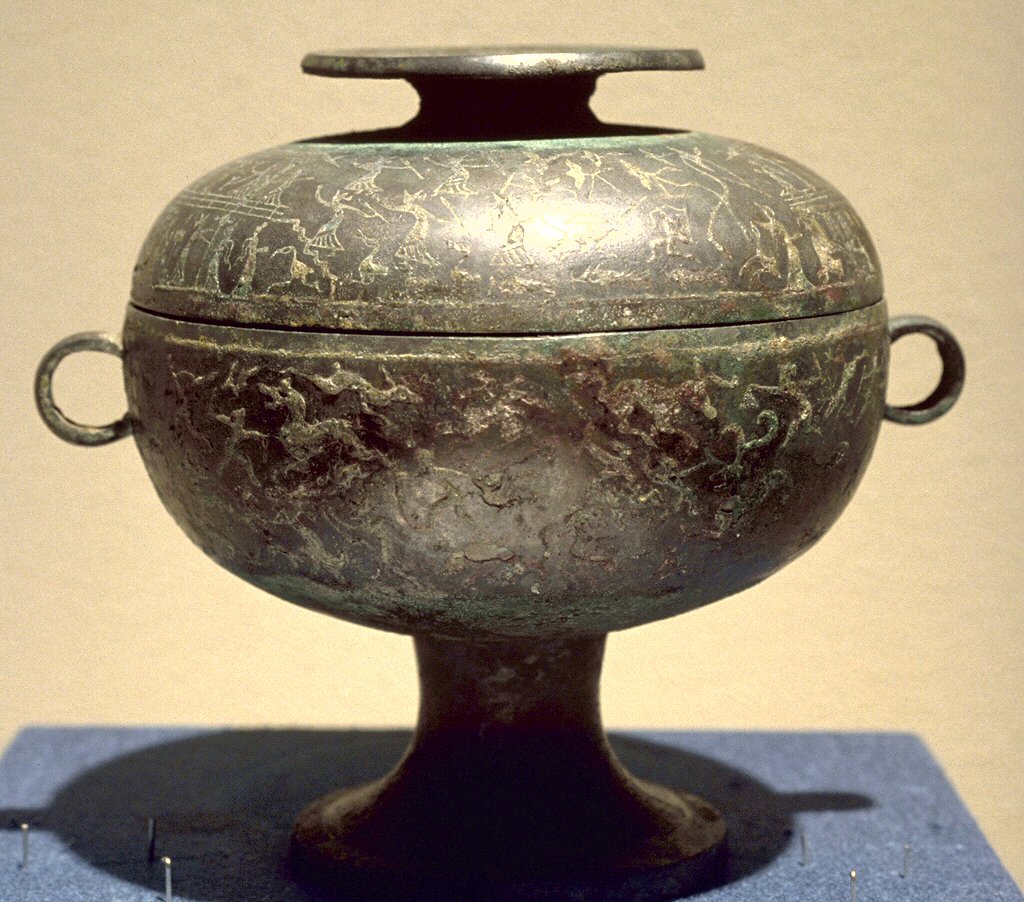Ritual Covered Food Container (Dou)
(China )
On the cover of this container are scenes of hunting, preparation of food, and musicians performing. Around the bowl of the vessel appear armed men among animals, many of them fantastic.
Some of the earliest belief systems in China included communicating with spirits and worshipping ancestors. Later, the philosophies and religions of Confucianism, Daoism, and Buddhism contributed their respective teachings and rituals. The interplay between these traditions over time helped define Chinese society and culture. Many rituals and ceremonies took place at an altar (in temples or homes)—it was at the altar where the human world, the natural world, and the supernatural worlds connected. So the objects that were placed on a ritual altar possess meaning and significance. The practice of conducting rituals at the altar continued in China through the Qing dynasty (1644–1911).
Provenance
Provenance (from the French provenir, 'to come from/forth') is the chronology of the ownership, custody, or location of a historical object. Learn more about provenance at the Walters.
William T. / Henry Walters Collection, Baltimore; Walters Art Museum, 1931, by bequest.
Exhibitions
| 1995-1996 | Raiders and Traders on China's Northern Frontier. Arthur M. Sackler Gallery, Washington. |
Geographies
China (Place of Origin)
Measurements
Overall, H: 7 3/4 × W: 8 3/4 × D: 7 1/4 in. (19.7 × 22.2 × 18.4 cm); Base, H: 6 1/8 × W: 8 3/4 × D: 7 1/4 in. (15.6 × 22.2 × 18.4 cm); Lid, H: 2 3/8 × Diam: 7 1/4 in. (6 × 18.4 cm)
Credit Line
Acquired by William T. or Henry Walters, before 1931
Accession Number
In libraries, galleries, museums, and archives, an accession number is a unique identifier assigned to each object in the collection.
In libraries, galleries, museums, and archives, an accession number is a unique identifier assigned to each object in the collection.
54.2182




